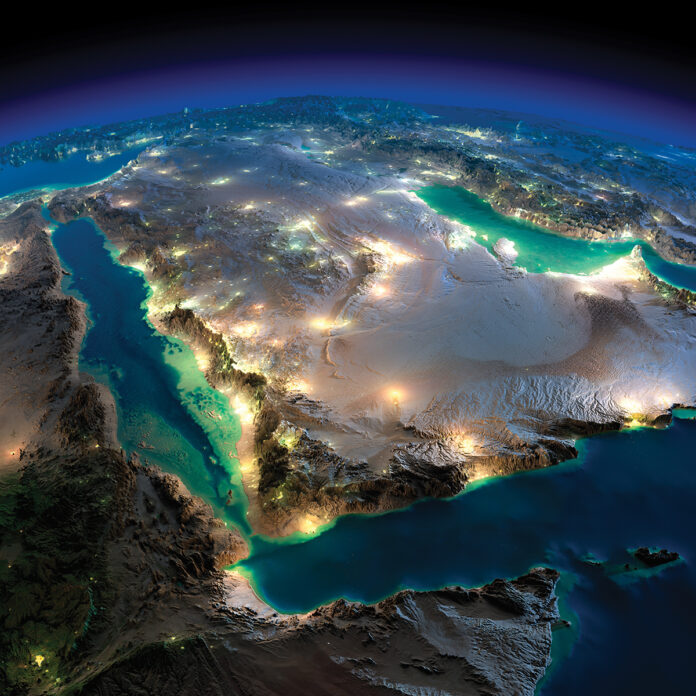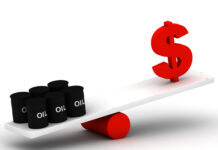
The UAE’s decision to play hardball at the most recent OPEC ministerial and OPEC+ meetings in early December was based on three factors. First, it believes that amongst the winners and losers of the OPEC+ deal first agreed in April, it belongs firmly in the latter category, given that its reference point production figure does not reflect its true production capacity. Second, there is an underlying resentment amongst its leadership that Saudi Arabia and Russia have “bullied” the alliance into accepting cuts that are — in the case of Abu Dhabi — inimical to its national interests, and third, it does not want to see its hydrocarbon resources stranded as the pace of the energy transition picks up and, therefore, would rather monetize them now.
It is not surprising then, that the main bone of contention between the UAE and Saudi Arabia — giving rise to Abu Dhabi’s hint that it will contemplate leaving OPEC altogether — is based on how they view their hydrocarbon futures. The UAE sees it as a race against the clock; it needs to produce as many barrels as possible before the oil market itself shrinks, and alternatives compete on price. Saudi Arabia, on the other hand, has the advantage of being the world’s lowest-cost producer ($3 a barrel) and feels comforted that it will eventually soak up the remaining market, as higher cost producers are left stranded. It also sees its competitive advantage given the lower average carbon intensity of oil produced by Saudi Aramco in comparison to high carbon-intensity crudes from competitors, which resort to flaring associated natural gas (Russia, United States, Nigeria, Iraq), or require energy-intensive recovery techniques (Canada, Venezuela, Oman, Indonesia) or complex refining (Canada, Venezuela, Nigeria). In other words, Saudi Arabia is confident that even though a decisive shift away from hydrocarbons is underway and the world has now entered peak demand, it will continue to play a leading role in global energy affairs as the dominant producer in the twilight of the oil age.
Saudi Aramco has developed a number of strategies aimed at protecting oil’s role in the world economy and increasing Saudi Arabia’s share of that global oil market. First, it has actively pursued vertical integration, and that involves combining its mature upstream sector with its growing downstream sector, especially in Asia, which is configured specifically for Saudi crudes. The vertical integration strategy is driven, in part, by climate risk. Saudi Aramco has begun investing in markets, particularly in developing Asian countries, where policymaking prioritizes advances in development over concerns about environmental damage. It is in these countries where oil demand is most likely to grow strongest in coming decades, even as it falls away elsewhere. Aramco’s downstream investments, therefore, are aimed at ensuring that Saudi oil has preferential access and captive ownership and configuration of refining capacity for Saudi oil grades.
It is little wonder that Saudi Arabia and the UAE’s approach to managing future oil markets differs so greatly. Where their interests may have once converged and, indeed, it was difficult to see daylight between Saudi, UAE and Kuwaiti oil policies, they have now diverged in accordance with distinctive national interests. They see different pathways to the future, with the UAE focused more on the short to medium-term and Saudi Arabia on the long-term. However, there is still some way to go, and Saudi Aramco, which has enjoyed a favorable reputation amongst international and national oil companies (NOCs) over the years, has come under pressure recently, mostly political, which may well come to affect negatively its strategy, efficiency and ultimately its profitability.
The politics behind the current oil price crash — exacerbated by COVID-19 — have hurt Saudi Aramco’s profitability this year — Q3 profit was down 45%. Its net income in Q2 2020 fell 73% year-on-year (y-o-y) to $6.6 billion. Total income for the first half of the year totaled $23.2 billion, down around 50% compared to the same period in 2019. However, the company still paid out a Q2 dividend to shareholders of nearly $18.8 billion, up from $13.4 billion in Q2 2019, despite a 70% drop in cash flow y-o-y in Q2 to just $6.1 billion. It intends to pay Q3 dividends of $18.75 billion in Q4.
The price crash has forced the company to cut spending, put some costly downstream projects on hold, and raise debt to meet its dividend obligations. For example, plans to build or finance refinery projects in China, India and even the U.S. could face delays or suspension under Saudi Aramco’s recently announced ‘portfolio optimization’ strategy. Many of these projects will take years to turn a profit, leading the company to reassess its priorities, as low prices and muted demand weigh on revenues — more significantly for the government than for Saudi Aramco, as it is dependent on the NOC for almost three-quarters of annual revenue.
Its $8 billion bond issue in November was well-received by investors, but the sale was under very different market conditions to its debut issue in 2019, when order books hit $100 billion, and the bond was able to price inside the sovereign curve, meaning it could borrow more cheaply than the government. In the absence of a significant pickup in oil prices over the coming months, as well as restrictions on domestic oil production due to OPEC+ commitments, delivering on its $75 billion dividend promise will remain Saudi Aramco’s toughest challenge. While cash flow remains significantly hampered, debt will be a significant proportion of dividend payments — a route Saudi Aramco will be wary of treading. In the short-to-medium term, the company will likely take other measures to address finances, including asset sales and further restructuring of its operations to cut costs. Recent reports indicate that Moelis has been hired to develop a plan to raise funds by selling stakes in some of Aramco’s subsidiaries, including pipelines, which is estimated to bring in around $10 billion alone.
Whilst the UAE is thinking ahead about its exit strategy from global oil markets — before it is left with stranded assets on its hands — Saudi Arabia looks set to stay the course, with a few bumps in the road, and inherit an even bigger market share and look on as its high-cost producer rivals fall by the wayside. As such, the OPEC+ plus caravan will likely roll on, but slowly. The wagons will become unhitched, and the UAE may be the first to break free.
About the author: Neil Quilliam leads the strategic advisory practice at Azure Strategy and is responsible for driving the company’s mission and objectives. He is a foreign affairs specialist with extensive experience consulting to governments and corporate clients on geopolitics and energy in the Middle East. An Associate Fellow at Chatham House, his previous positions have included CEO of Castlereagh Associates and senior Energy Adviser to the UK’s Foreign and Commonwealth Office. Neil has lived in Saudi Arabia, Jordan and the UAE and is a fluent Arabic speaker. He is a regular marathon runner and is often in running shoes during meetings. [email protected]















[…] March 2021.[xi] Neil Quilliam, ‘The Future of OPEC+’, ShaleMag, 8 February 2021, https://shalemag.com/the-future-of-opec/, accessed 6 March 2021.[xii] Neil Quilliam, ‘Russia and Saudi Arabia Power Risks OPEC+ […]
[…] March 2021.[xi] Neil Quilliam, ‘The Future of OPEC+’, ShaleMag, 8 February 2021, https://shalemag.com/the-future-of-opec/, accessed 6 March 2021.[xii] Neil Quilliam, ‘Russia and Saudi Arabia Power Risks OPEC+ […]